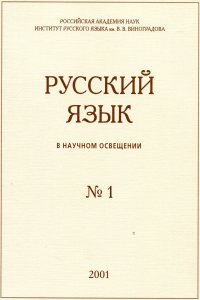Modal particles and aspectuality: znaj and sebe in Russian
Abstract:
The paper investigates the semantics and grammatical features of the Russian particles znaj and sebe and also their combination znaj sebe, the study of which has until recently been rather neglected and which often treated as synonymous. We show that they are in fact quasi-synonymous. What both particles (and their combination) have in common is the durative, imperfective nature of the verb that combines with them. However, there are also considerable semantic differences between these particles. On the basis of a qualitative analysis of corpus data, we show that these semantic differences are reflected in the question of whether the subject can be inanimate, the combinatory possibilities with pust’, and the possibility of combining the particle with a perfective verb.


